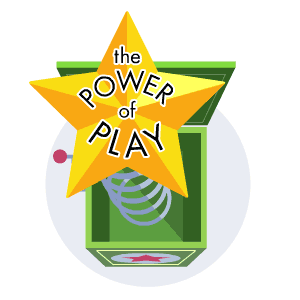

Being unhappy with your identity can make the world a tough place. Some of us, though, are unsure of which new traits we want to try–or what they might look like–to make a change. We fear the reactions of others to any shifts in our behavior, personality, or appearance.
Games can offer a lifeline, letting players inhabit a space where exploration is not only possible but encouraged. A place where we can examine the relationships between ourselves, our perceptions of others, and the world around us. To play is to resign yourself to a world of unknowns, with far softer consequences for any transgression.
You probably know the statistics on mental health already, but they’re worth repeating. Nearly one in 10 people in the world have a mental health disorder, and only one percent of the total global health workforce deals with mental health. Globally, only three percent of government spending goes toward mental healthcare. Other barriers to treatment include cost, discrimination, and distance to providers. These are obvious challenges to treating mental health issues worldwide.

Games are in a unique position to change this. As children, we all speak the language of play. As adults, it’s not something we forget–it’s something we forget to practice. The language of play can help doctors reach patients where traditional outreach programs are impossible due to access or cost. From remote communities learning how to prevent the spread of an emerging tropical disease, to increasing literacy in rural India, games represent a lower-cost, scalable opportunity for providing care and information.
As smartphone ownership in emerging economies increases, so does the potential for developers and doctors to join forces. During play, we use existing skills or develop new ones to overcome in-game obstacles. Game structures can be useful for doctors looking to help their patients understand and take advantage of new therapies or treatments.
Videogames can sometimes even provide healthcare workers with an alternative to prescription medication, which is costly and can have unintended side effects. For children and teenagers with Attention Deficit Hyperactivity Disorder (ADHD), videogames have proved to be an effective treatment–in part because they provide continuous feedback, which can improve focus and increase a patient’s attention span.

All this is backed up by well-documented neuroscience. Creating and sharing stories has always been a part of our human experience, because narrative helps us construct and understand our reality and our experiences within it. It also helps us overcome the work of play. Playing a game requires considerable effort from the brain’s finite pool of resources, like attention. It would be exhausting to play a game where we were aware of how much effort we’re expending on staying focused.
That’s why enjoyable games tend to be the ones where we are able to forget we’re playing at all–a process known as immersion or transportation. The moment you become more interested in a story’s outcome is the moment you turn off your internal skeptic. Immersion allows us to be more receptive to new ideas and concepts, as the brain’s focus is elsewhere. This can help people override or learn new behaviors to supplant older, unhealthy ones. Narrative is where the work of persuasion and change happens.
Whether we realize it or not, many of us already use videogames to promote our own mental health and well-being. Engaging in play helps us regulate our emotions, reduce stress, increase our self-esteem, and socialize. Our mental health is more than an absence of a mental disorder. It encompasses our entire emotional, physiological, and psychological well-being.

Any daily stressor, from sitting in traffic to homework, can activate the body’s fight or flight response. If we never learn effective coping techniques for dealing with this stress, we increase our risk for developing related health issues later in life. Teaching these practices early can decrease the incidence of mental health problems over an individual’s lifetime.
Using biofeedback, a team at BfB Labs (which is part of Shift Design) creates games that teach diaphragmatic breathing–a technique shown to help combat the body’s natural stress response. One is Champions of the Shengha, a game in which players wear a device that measures their heart rate variability (HRV). To perform well in the game, players must control their breath, which in turn increases their HRV.

To teach this rather abstract concept the team came up with a more digestible narrative. “Our game is about being a powerful spellcaster, and the idea that the way spellcasters gather their power is by focusing their mind and body into this particular state,” co-founder and design director Simon Fox tells me. “We use that to teach our players a lot about how to interact with the game very quickly, which is a great trick when it works.”
Fox says that participant feedback and studies on the first versions of the game have been encouraging. Players show an increase in emotional resilience, or the ability to adapt to challenges and tasks in stressful situations. Student testers shared stories of using their newfound skills to help them deal with the stress of being a student and growing up.
The more personalized play becomes, the more opportunities we have to learn about ourselves. As the ability to introduce more of our body’s feedback into games grows, players will become increasingly active participants, creating a deeper and more meaningful play experience–from therapy rooms that turn into vibrant, simulated environments to mobility rehabilitation that uses virtual reality to teach patients how to move again.

The motivation to change doesn’t always come from positive in-game experiences. Consume Me is a game in development by Jenny Jiao Hsia that explores extreme dieting. It’s also a game that doesn’t want you to win.
The game operates under the same rigid food rules the creator followed when she was 16. According to Jiao Hsia, the game examines the disconnect between what we believe we should do and our ability (or lack thereof) to follow through on these tasks. Learning how to accept negative emotions is a crucial component to well-being. Play can help us deal with the emotional and behavioral consequences of failure.
In games, negative character emotions or in-game experiences tell us that we haven’t met certain objectives of the game. The same is often true in the real world. Negative feelings and emotions tell us something about ourselves and our needs.
Researchers from the University of Auckland used this principle to help teenagers work through their negative feelings. SPARX is a seven-level interactive fantasy game aimed at reducing depressive symptoms in teens. Advancing in the game requires players to show mastery over skills like the reframing of negative thoughts or dealing with strong emotions like anger. The success of SPARX as a treatment was dependent upon how engaged a player was–and that’s true for all types of play.

Games have personally helped me with mental health issues. A few years ago, I created a visual novel called The Average Everyday Adventures of Samantha Browne about a girl who has to make oatmeal in the communal kitchen of her dorm. It’s a simple task, but the character of Samantha Browne is bad at making decisions. Every choice must be weighed against Samantha’s ultimate goal, making people believe she’s normal.
People who play it often become frustrated. They say the game makes them too anxious or they wish the game had more positive feedback. They wonder about the character: How could Samantha possibly function as a college student if she can’t even make herself food? I know all these questions, because I’ve asked them all myself.

Samantha is the voice of my eating disorder, and the game is both my creation and my medicine. Seeing how others play, how they compare and contrast their lived experiences with Samantha’s, gives me relief. Maybe playing this game isn’t always nice, maybe it’s downright uncomfortable–but you can get through it. That’s the power of play.
What I enjoy most about creating and playing videogames is the chance to explore worlds and people I may never know or even be. That doesn’t mean there won’t be the occasional monster for me to face–but if I practice, if I’m willing to fail and learn from my mistakes, there is always hope. That’s the lesson I’ve learned from games.
Play cannot solve every healthcare challenge, of course–but it’s an inherently hopeful endeavor, rooted in a universe of possibilities too numerous to count. At our core, we are all hopeful explorers, waiting, watching, and learning. When we connect to others during play, we expand these opportunities for exploration.
That alone, for me, makes it a path to self-care worth pursuing.


How We Get To Next was a magazine that explored the future of science, technology, and culture from 2014 to 2019. This article is part of our The Power of Play section, which looks at how fun and leisure can change the world. Click the logo to read more.
